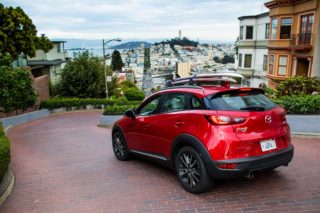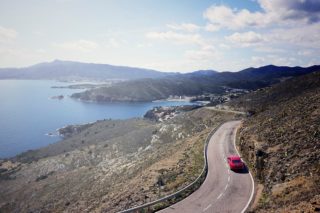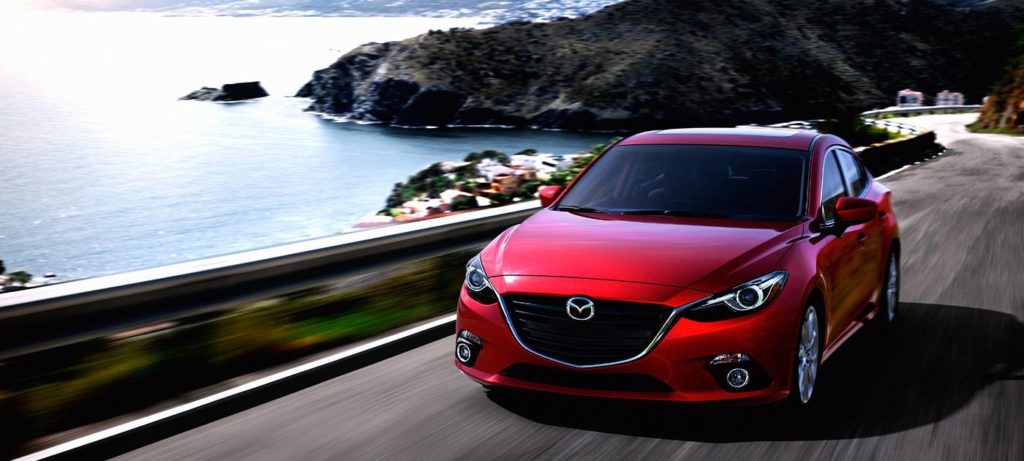Mazda’s metamorphosis from a Japanese marque to an American automobile mainstay has mostly been possible thanks to stellar marketing.
Whether it’s hitting the streets of Austin for SXSW as a sponsor giving free rides to attendees, or introducing massive multichannel content campaigns highlighting its “kodo” design language, the car manufacturer is taking consumers on a journey under the modus operandi “Driving Matters” while positioning themselves as an upscale driver’s brand.
Eric Watson, Mazda’s marketing director who’s worked a slew of positions for companies like Land Rover, Jaguar and Ford throughout his career, joined [a]listdaily to discuss how the company is approaching autonomous driving and other immersive technologies.
Mazda was named “Best Car Brand” by U.S. News & World Report in 2015. How are you building a marketable brand profile to customers this year?
Mazda has a very unique customer base who appreciates the joy that driving brings, and really, our marketing campaigns are designed to do that: to connect with people around one of their passion points around driving. Last year we launched a campaign on how a car is used in your daily life to bring that level of excitement and passion.
How would you describe the typical Mazda driver?
A Mazda driver appreciates their car. It’s more than going to point A and Point B. They like the driving experience. They like the way a car looks. They like the way a car feels in their hands, and how it responds to their inputs. And that’s the story we’re trying to tell . . . as a car brand, you really have to carve out what your niche is, and what you stand for. We want to connect with people who love driving.
Mazda announced it had its best annual sales year in two decades. What do you think was the cause for this?
I think we have a great product lineup, both from a design aesthetic and also from the engineering and technologies that go into our cars. We’re really at a place that’s connecting to our target customer with our message.
Would you consider the Miata the flagship car for Mazda?
We certainly have a great product line across the board. It’s a favorite of many people. It’s the best-selling roadster of all time in the world. It’s certainly a flagship in design and performance of what our philosophy is around of “Driving Matters.”
Mazda and Microsoft teamed up last year to bring the 2016 Mazda MX-5 to Forza Horizon 2 for free, as well as a chance to win an actual, real-life version of the MX-5. How does Mazda engage with video gamers?
It was really a multi-faceted campaign that occurred over a six-to-seven-month time period. Not only was it an inclusion in the actual game with both our heritage cars and our new car, but we also had online contests within the Xbox system where people got to interact with Mazda through design contests. We took that partnership to SXSW (in 2015) where we invited people that raced over a couple month’s span to continue that competition and had an activation there, and also E3 later in Los Angeles that year where the finalists raced head-to-head against each other in a live environment and had a chance to win an MX-5 Miata. One of the cool things is that we surprised both of those contestants with a brand new car. So it was fun.

Does Mazda have any plans of getting into eSports to acquire new target audiences?
People have grown up over the last 20 years playing video games. It’s become very mainstream, and that’s an audience we want to connect with now and in the future. There’s many there that share our passion for driving.
The car-buying process, and how customers encounter and explore a vehicle, is vastly changing. How can manufacturers use virtual and augmented reality in the retail experience?
Virtual showrooms can be a reality. We’ve seen a lot of demonstrations of technology. We explore from time-to-time different options to do that. As a marketing tool, VR and AR have potential to give people an experience without physically having to be in the vehicle. It will give an opportunity to take your product and make it accessible to more people in their own environment and own time. You’re able to change the color of car, go into the interior and really get an immersive experience. Eventually, someone will want to go to the showroom to have a one-on-one experience with the car. Virtual reality will aid their shopping process and narrowing down their choices.
Mazda and CEO Masamichi Kogai have taken a backseat on autonomous driving to instead focus on the actual pleasure of driving. What is the biggest challenge self-driving cars presents car manufacturers?
Mazda’s approach is going to be able to focus on the driver and be able to give an experience to the driver that is both delivering joy and pleasure but also providing safety for them and their drive. I think as the industry goes the next few years, there will be a balance between that driving pleasure and enjoyment and safety that autonomous driving can bring into the cars.
Are you personally looking forward to autonomous driving?
I think there are aspects of it. I think the safety features are going to be great, and make the experience more enjoyable. But I enjoy and want to have that connection to the car and be able to steer and press the gas and press the brake.

Will society have qualms of getting on the road?
I’m not sure exactly what the future is going to bring. I think elements will be brought into make the driving experience safer for everyone. But I think there’s many people who still enjoy that visceral driving experience.
What are some specific strategies Mazda wants to execute over the next ten years as the autonomous craze drives by?
Four years ago, Mazda took a very unique approach to develop Skyactiv Technology. It’s really a suite of engines and transmissions that greatly helped improve fuel economy, which is important for a sustainable future. But it also helped us continue to have a great driving feel. So we’re able to make advancements around gasoline technologies. . . . That was an important step in our transition, and kind of a view of where we’re headed in the future.
Follow Manouk Akopyan on Twitter @Manouk_Akopyan

